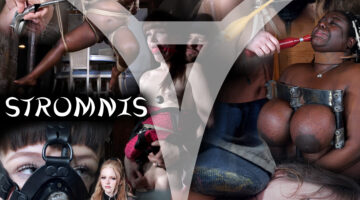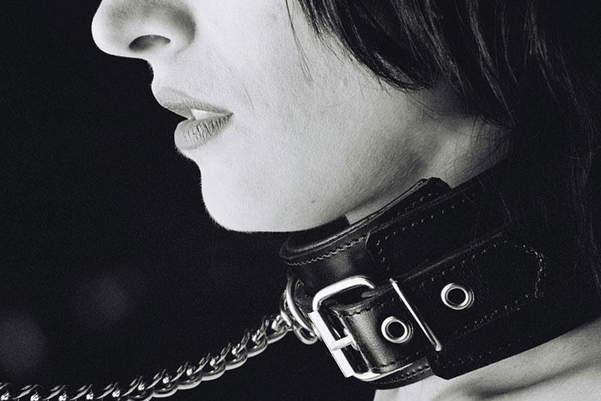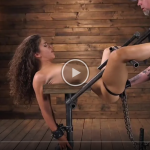BDSM Collars: What Makes Them so Important
BDSM is about power play and the toys – locks, paddles, whips, cuffs, belts, and of course collars – are a big part of that. The standard ones look like typical dog collars, but they can do wonders for your sexual pleasure in a BDSM session.
Any collar that can be used to restrict neck movement and (carefully!) air flow can be classified as a BDSM collar. These items are intended for people who are aroused when their partner dominates them and enjoy having little to no control over the sex. They can come with a lock, a ring, or a chain to affirm the submissive party’s status.
If you want to learn more about collars, this is the best place to start. This article will explain the different types, why they’re used, and what to look for when buying one.
Using a BDSM Collar
BDSM collars are used in play in a few different ways. Demonstrating possession is obviously the first and most common one. Being on your knees with a collar around your neck and the chain in your partner’s hand is about as submissive as it gets. They can make you do whatever they want, including drag you around.
Some women wear BDSM collars in public, although the ones meant to be worn publicly are different from those used in sex play. Another advantage of wearing one is improved posture. The collars tend to be wide, so you can’t let your head droop down or slouch. The person who’s wearing the collar has to keep their head up and maintain upright, confident posture at all times.
The Collaring Ritual
When getting into collaring, there’s a specific procedure to be followed. It starts with wearing a collar of consideration. This is typically given for a certain amount of time at the beginning of a new dominant/submissive (d/s) relationship. It’s tentative in nature because you don’t know if the relationship is going to work out. After the agreed period ends, the couple makes one of three decisions: to move to the next level, to extend the current one, or to stop with the whole thing.
Training Collar
The next stage is the collar of training or consideration. Sometimes compared to getting engaged in traditional courtship, it introduces a more serious phase of the relationship. The partners discuss each other’s needs, lifestyles, wishes, and more to see if things will work out. Usually, training collars are black or red and made of leather.
Formal Collar
The final collaring stage is that of the collar of ownership or formal collar. This is a symbol of the people’s commitment to each other.
Miscellaneous
In addition to the three main types, there are a few others. They symbolize different things and are subject to specific nuances. One of them is the protection collar, which is given to the submissive partner when they are in danger. The dominant partner’s initials are on the collar along with the letter ‘p’ for protection. This gives the submissive safety. They can’t be approached by another dominant without the first one allowing it. A configuration of two dominants and one submissive actually isn’t rare.
There are also play collars and slave collars. The first are worn during a scene. Typically, they have specific functional qualities, like a D-ring.
The slave collar is permanent, meaning the submissive is never allowed to remove it without their master’s permission.
Buying a BDSM Collar
If you’re new to this type of play, don’t choose collars with buckles because they can be hard to take off. If you start to suffocate, you can imagine the problems fiddling with the buckle can lead to. Beginners should choose collars made of Velcro or other materials that can be removed quickly. In terms of size, it’s a good idea to get an adjustable collar. Some products, like eternity collars, can’t be adjusted, so you need to measure the circumference of your neck before you buy one. To do so, use a soft measuring tape and add just over an inch to the length. When you shop for submissive collars, make sure you look at the full range of products to find the best option. It’s not a purchase to be rushed.
Materials and Extras
Most collars are made of leather, steel, rubber, or PVC. The first material is the best. Public collars can be made of nylon, cotton, or neoprene. BDSM collars can be decorated with nails, studs, or spikes. Sometimes they have padlocks, hooks, or straps.
Types of BDSM Collars
The most basic type is your average dog collar. These usually contain metal and are made of leather. Wear ones with metal spikes with caution.
Eternity Collars
Also known as ring collars, these look like unremovable steel rings. Some are golden or pearl-shaped. They can make a fashion statement apart from fulfilling their intended function in the bedroom.
Halter Collars
Drop collars or halter collars are comfortable to wear over more extended periods of time because the neck is free to move. They drop down low at the front. For extra aesthetic appeal, you can hang jewelry on the lowest part of the drop.
Wolf Collar
These collars have nails, studs, and spikes on them. Their name comes from the fact that they’re used to protect dogs from wolves. In BDSM, they’re seen as decoration. The safest ones have all their elements made of plastic.
Hybrids
Apart from the traditional kinds, there are collars with cuffs, gags, and other attachments. These are best for more advanced practitioners. They also tend to cost more, but it’s a price well worth paying considering how much more excitement they can add to the play.
Posture Collar
We mentioned this type briefly. It’s analogical to a corset for the waist, but made for the neck to keep the chin up.
Day Collar
Steel is the most common material for daytime collars. These BDSM collars are simple, elegant, and discreet, a perverse little secret between the two of you.
















